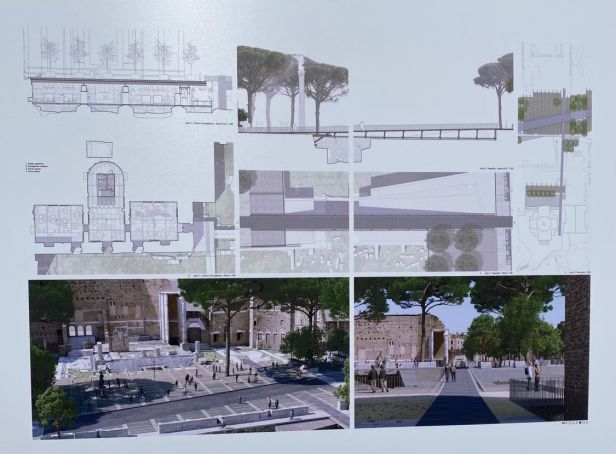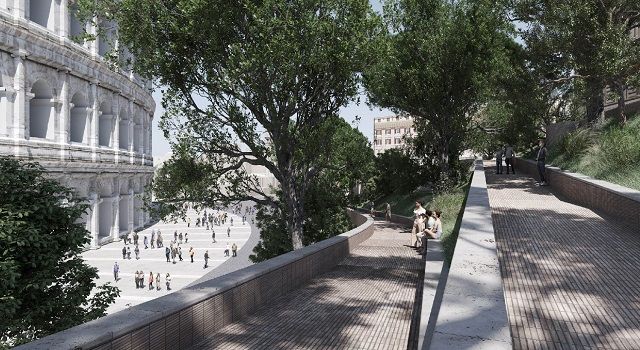Studio Labics wins international competition.
The winning design for a New Archaeological Walk linking Rome's ancient landmarks was unveiled at a presentation on the rooftop terrace of Trajan's Forum on Tuesday.
Rome-based architectural and urban planning studio Labics was named as the winner of the international design competition launched last October, coming first out of 23 proposals.
The Nuova Passeggiata Archeologica project will incorporate new pedestrian spaces, green areas, terraces, raised walkways and cycle-pedestrian paths along the route whose works have an estimated price tag of €18.8 million.
Nuova passeggiata archeologica dei #ForiImperiali, vince il concorso internazionale lo studio Labics. Il progetto collegherà l’intera area archeologica centrale della città.
Per saperne di piùhttps://t.co/K623Tt4rq2@Sovrintendenza #RomaSiTrasforma #Giubileo2025 pic.twitter.com/uZ0cZOCESB— Roma (@Roma) April 2, 2024
The plan by Labics reimagines the public spaces and walkways linking Rome's ancient sites in a "large pedestrian ring" around the Roman Forum, Colosseum, the Baths of Caracalla and the Circus Maximus, incorporating also the Caelian, Palatine and Capitoline hills.
The presentation was attended by Italy's culture minister Gennaro Sangiuliano, Rome mayor Roberto Gualtieri and the capital's superintendent of cultural heritage Claudio Parisi Presicce.
I Fori Imperiali e, più in generale, l’intero Parco Archeologico del Colosseo sono luoghi che tutto il mondo ci invidia.
Riqualificheremo l'area dei Fori rispettando il valore della storia e la sua visione prospettica. pic.twitter.com/1eFVtq1adM— Gennaro Sangiuliano (@g_sangiuliano) April 2, 2024
Labics, founded in 2002 by Maria Claudia Clemente and Francesco Isidori, was chosen as the winner by a panel of five experts chaired by the Portuguese architect João Luís Carrilho da Graça.

The judges singled out the "convincing solution" of a proposed terrace for the slopes overlooking the Colosseum, below Via Nicola Salvi, which "resolves the multiple functional and landscape needs of the particular existing context with a single architectural gesture."

Asked about the prospect of fully pedestrianising Via dei Fori Imperiali, a process begun in 2013 by former Rome mayor Ignazio Marino, Gualtieri said it would only become possible after 2033 when the Metro C station in Piazza Venezia becomes operational.
The winning entry will now be subject to legal and feasibility checks, according to the city of Rome website, which states that all going to plan the works could start by September.
Photos Labics




















